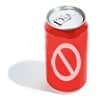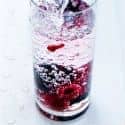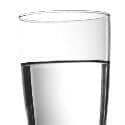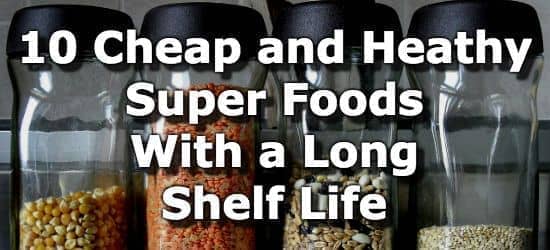Top 10 Foods and Drinks Highest in Fluoride

Fluoride is a mineral known for strengthening teeth and helping prevent dental cavities. (1) Since the amount of fluoride in foods can vary, it is added to public water supplies in some countries, including the United States.
According to the National Library of Medicine (NLM), the amount of fluoride you need depends on your body mass (weight). Children typically need 0.5mg (500mcg) per day, while adults need 3-4mg (3000-4000mcg) of fluoride each day. (2) For the adequate intake (AI) calculations below, a value of 4mg (4000mcg) is used.
Since consuming too much fluoride can have ill health effects, the NLM sets the upper limit at 10mg, or 10,000mcg. (2) This is just 2.5 times the adequate intake.
Fluoride can be found in a variety of different foods, including tea, coffee, shellfish, grapes (raisins, wine, grape juice), artificial sweeteners, sodas, potatoes, flavored popsicles, baby foods, broths, stews, and hot cereals made with tap water.
Sugary or carbonated drinks can lead to more tooth decay. Even if they contain significant levels of fluoride, they tend to have a net negative effect on dental health, due to the effects of the sugar they contain. (3)
For all these fluoride foods and drinks, if fluoride-fortified water was used in their creation, they will have even more fluoride. Below are the top 10 sources of fluoride, for more, see the extended list of fluoride-rich foods and drinks.
List of Fluoride Sources
-
 1. Black Tea (Brewed With Tap Water) + Add
1. Black Tea (Brewed With Tap Water) + Add
Fluoride
per CupFluoride
per 100gFluoride
per 200 Calories883.8mcg
(22% AI)372.9mcg
(9% AI)74580mcg
(1865% AI)The amount of fluoride will depend on the levels in the water used to prepare it. Even commercial teas sold in bottles and cans may contain some fluoride.
-
 2. Fruit Juice (Grape) + Add
2. Fruit Juice (Grape) + Add
Fluoride
per CupFluoride
per 100gFluoride
per 200 Calories349.1mcg
(9% AI)138mcg
(3% AI)460mcg
(11% AI)*Fruit juice is high in sugar which can harm teeth.
-
 3. Sodas + Add
3. Sodas + Add
Fluoride
per 12oz CanFluoride
per 100gFluoride
per 200 Calories299.8mcg
(7% AI)80.6mcg
(2% AI)335.8mcg
(8% AI)The amount of fluoride will depend on the levels in the water used to prepare it. *Sugary sodas are not healthy food and are best avoided. Further, the acidic carbonation in soda can cause tooth decay.
-
 4. Blue Crab + Add
4. Blue Crab + Add
Fluoride
1 CupFluoride
per 100gFluoride
per 200 Calories283.4mcg
(7% AI)209.9mcg
(5% AI)505.8mcg
(13% AI) -
 5. Shrimp + Add
5. Shrimp + Add
Fluoride
per CupFluoride
per 100gFluoride
per 200 Calories257.3mcg
(6% AI)201mcg
(5% AI)402mcg
(10% AI) -
 6. Fruit Flavored Water with Sweeteners + Add
6. Fruit Flavored Water with Sweeteners + Add
Fluoride
per 8oz CupFluoride
per 100gFluoride
per 200 Calories247.7mcg
(6% AI)104.5mcg
(3% AI)20900mcg
(523% AI)Nutrition Facts for Water, non-carbonated, bottles, natural fruit flavors, sweetened with low calorie sweetener. (Source)*Flavored water with artificial sweeteners is not as healthy as plain water. Carbonation in water can make the water acidic, increasing the risk of tooth decay. (3) This article has the pH of several popular brands of sparkling water.
-
 7. Table Wine + Add
7. Table Wine + Add
Fluoride
per 5oz GlassFluoride
per 100gFluoride
per 200 Calories226.9mcg
(6% AI)153.3mcg
(4% AI)369.4mcg
(9% AI) -
 8. Coffee + Add
8. Coffee + Add
Fluoride
per 8oz CupFluoride
per 100gFluoride
per 200 Calories215mcg
(5% AI)90.7mcg
(2% AI)18140mcg
(454% AI)The amount of fluoride the coffee contains will depend on the water used to prepare it.
-
 9. Average Municipal (City) Tap Water + Add
9. Average Municipal (City) Tap Water + Add
Fluoride
per 8oz CupFluoride
per 100g168.7mcg
(4% AI)71.2mcg
(2% AI) -
 10. Raisins* + Add
10. Raisins* + Add
Fluoride
per OzFluoride
per 100gFluoride
per 200 Calories60.8mcg
(2% AI)233.9mcg
(6% AI)156.5mcg
(4% AI)*Raisins are high in sugar and can get stuck between teeth. As such, they can increase the risk of tooth decay.
More Sources of Fluoride
| Food | Serving | Fluoride |
|---|---|---|
| 1. Cooked Oatmeal + | per cup | 4% AI (167.5mcg) |
| 2. Chocolate Almond Milk + | per cup | 4% AI (166.1mcg) |
| 3. Light Beer + | per 12oz can | 4% AI (160.4mcg) |
| 4. Black Bean Soup + | per cup | 2% AI (87.9mcg) |
| 5. Cooked Carrots + | per cup | 2% AI (74.1mcg) |
| 6. Cooked Spinach + | per cup | 2% AI (68mcg) |
| 7. Boiled Potatoes + | per potato | 2% AI (67.2mcg) |
| 8. White Rice + | per cup | 2% AI (64.9mcg) |
| 9. Oysters + | per 3oz | 1% AI (53.6mcg) |
| 10. Asparagus + | per cup | 1% AI (39.4mcg) |
Fluoride Requirements By Age and Gender
The adequate intake (%AI) for fluoride ranges from 0.01mg to 4mg per day. (2)
| Life Stage | RDA |
|---|---|
| Infants* | |
| 0-6 months old | 0.01mg |
| 7-12 months old | 0.5mg |
| Children | |
| 1-3 years old | 0.7mg |
| 4-8 years old | 1mg |
| Males | |
| 9-13 years old | 2mg |
| 14-18 years old | 3mg |
| 19+ years old | 4mg |
| Females | |
| 9-13 years old | 2mg |
| 14-18 years old | 3mg |
| 19+0 years old | 3mg |
| Pregnancy | |
| 14-18 years old | 3mg |
| 18+ years old | 3mg |
| Lactation | |
| 14-18 years old | 3mg |
| 18+ years old | 3mg |
Source: Dietary Reference Intakes for Fluoride.
From the Nutrient Ranking Tool
Use the ranking tool links below to select foods and create your own food list to share or print.
View more nutrients with the nutrient ranking tool, or see ratios with the nutrient ratio tool.
Related
Data Sources and References
- Mariño R, Fajardo J, Morgan M. The Role of Fluoride in the Prevention of Tooth Decay Community Dent Health. 2012 Dec;29(4):302-8. 23488214
- NIH - Dietary Reference Intakes for Calcium, Phosphorus, Magnesium, Vitamin D, and Fluoride.
- Wang YL, Chang CC, Chi CW, Chang HH, Chiang YC, Chuang YC, Chang HH, Huang GF, Liao YS, Lin CP. Damage from Carbonated Soft Drinks on Enamel: A Systematic Review J Formos Med Assoc. 2014 Nov;113(11):850-6. doi: 10.1016/j.jfma.2014.06.002. Epub 2014 Jul 4. 25001324
Simplify Nutrition Tracking with MyFoodData!
Speedy Tools and Detailed Data FREEEasily analyze your meals to find the best foods for your goals.
✅ Use our recipe nutrition calculator and nutrition comparison tool.
✅ Access expert nutrition data tools and in-depth articles.
✅ Log foods and organize your recipes with a free account.


 Next ➞
Next ➞
